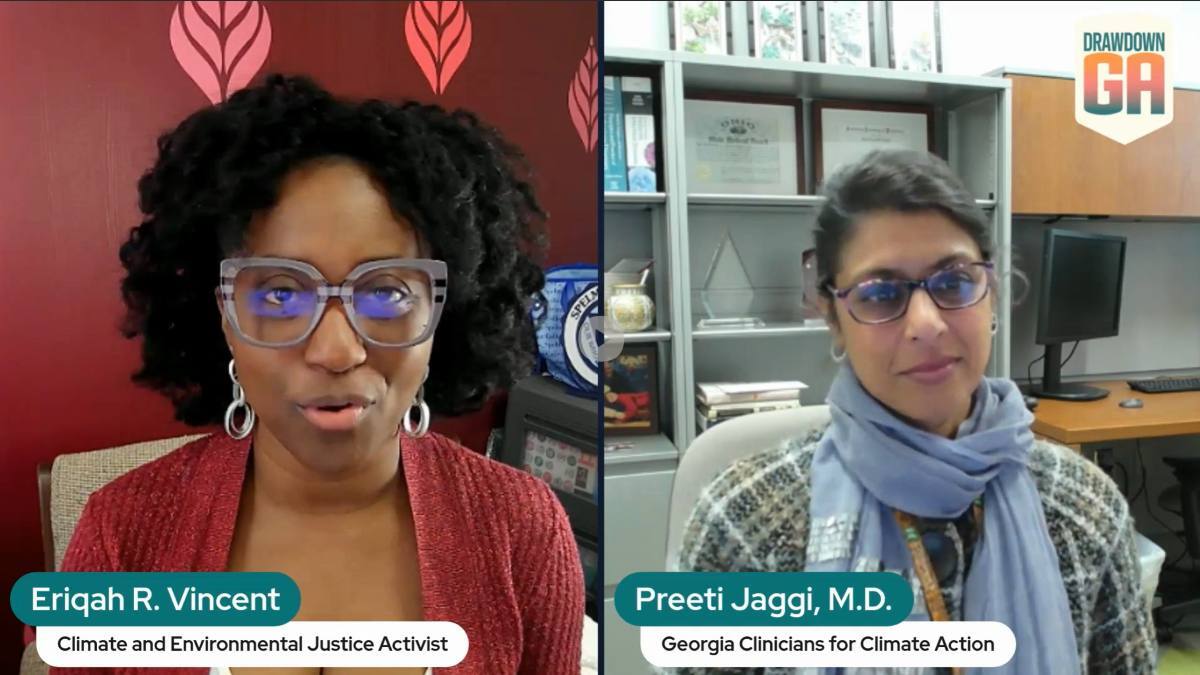Two decades ago, many believed that cutting emissions would come at the expense of economic growth. But a new report from Drawdown Georgia and the Georgia Tech Climate and Energy Policy Lab shows that Georgia has done just the opposite.
Between 2005 and 2024, Georgia’s greenhouse gas emissions fell by 33%, even as the state’s GDP more than doubled and its population grew by nearly 2.5 million people. That means the carbon intensity of Georgia’s economy (the amount of carbon emitted per dollar of economic activity) has dropped by more than two-thirds.
.jpg?width=800&height=497&name=Emissions%20Report%20Graph%20(1400%20x%20870%20px).jpg)
At the same time, the average Georgian’s carbon footprint has been nearly cut in half, falling from 15.8 to 8.2 metric tons per person. These changes demonstrate that economic and population growth can coexist with measurable reductions in greenhouse gas emissions.
What’s Driving the Change
The transformation of Georgia’s electricity sector has been the biggest driver of progress. Over the past decade, the state has retired more than 5,000 megawatts of coal-fired power plants while rapidly expanding natural gas and solar generation. Georgia now ranks among the top ten states for installed solar capacity.

Georgia’s 22 million acres of forests and coastal wetlands also play a major role as natural carbon sinks, offsetting nearly 27% of total statewide emissions each year. This makes Georgia a national leader in natural carbon sequestration, highlighting the importance of protecting these ecosystems for continued climate benefits.
The Challenges Ahead
While the state has made major strides in cleaning up its electricity supply, emissions from transportation and natural gas use have grown. Transportation is now the largest source of greenhouse gas emissions in Georgia, driven by an expanding freight and delivery sector.

In homes, businesses, and factories, rising direct use of natural gas has slowed progress, even as efficiency improvements and cleaner electricity have helped reduce overall emissions.
A Roadmap for Continued Progress
The new report outlines a clear path forward to build on the state’s momentum:
-
Expand clean energy through large-scale solar and battery storage.
-
Scale electric vehicle adoption to reach 50% of new car sales by 2030 and electrify freight fleets.
-
Electrify buildings and industry with efficient technologies like heat pumps and clean process heat.
-
Protect and expand carbon sinks through sustainable forestry, tree planting, and wetland conservation.
Georgia’s Future Beyond Carbon
If Georgia’s carbon intensity had stayed at 2005 levels, the state would now be emitting more than three times its current total. Instead, Georgia’s story over the past 20 years demonstrates that deep emissions cuts and strong economic growth can reinforce each other.
By continuing to invest in clean energy, transportation, and natural solutions, Georgia can lead the South in proving that climate solutions work—for our economy, our health, and our communities.
See how Georgia’s progress adds up—and where we go next.
Want to take a deeper dive into the data? Download the free report, From Peak to Progress: Shrinking the Carbon Intensity of Georgia’s Economy and Society, now.


.jpg)




